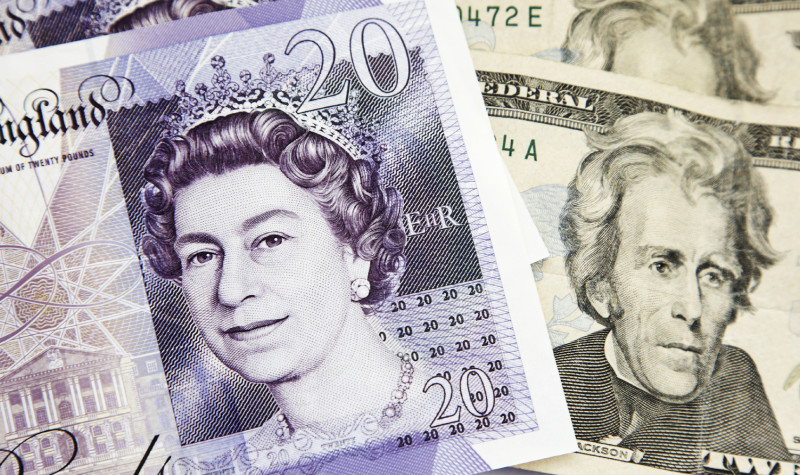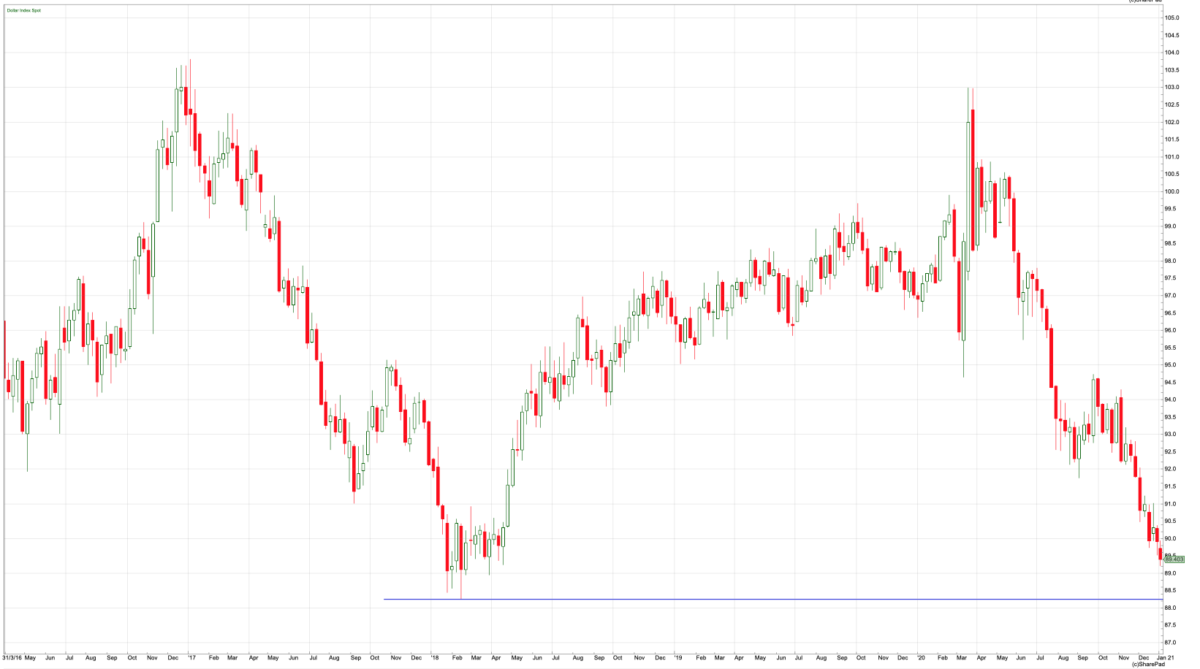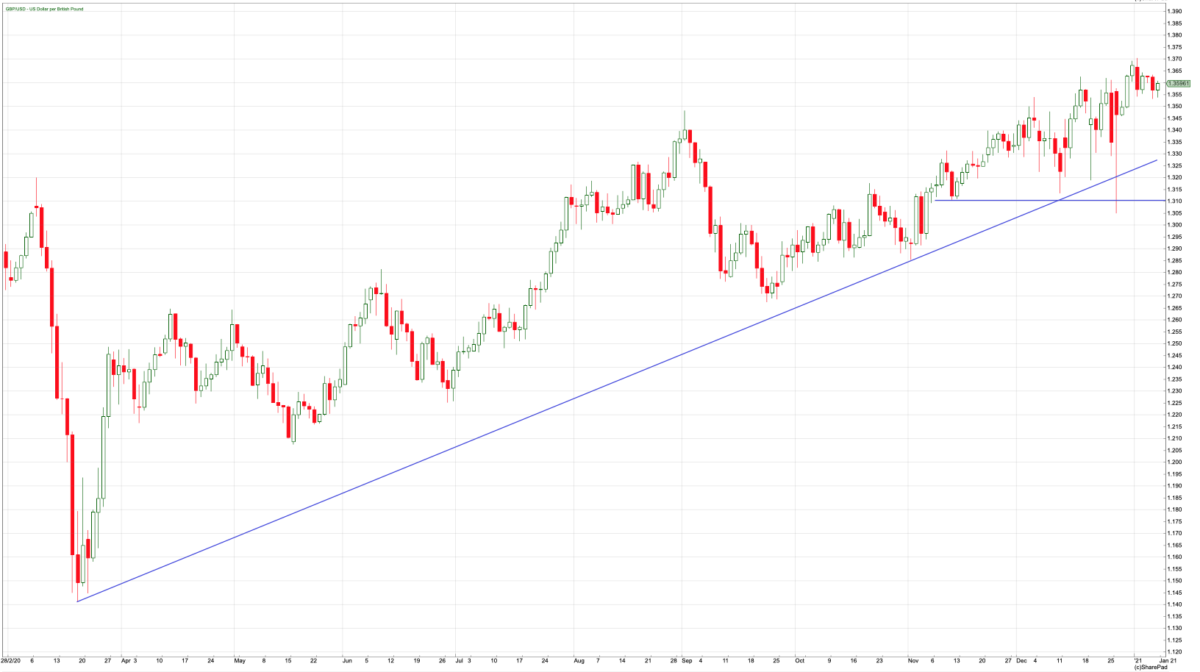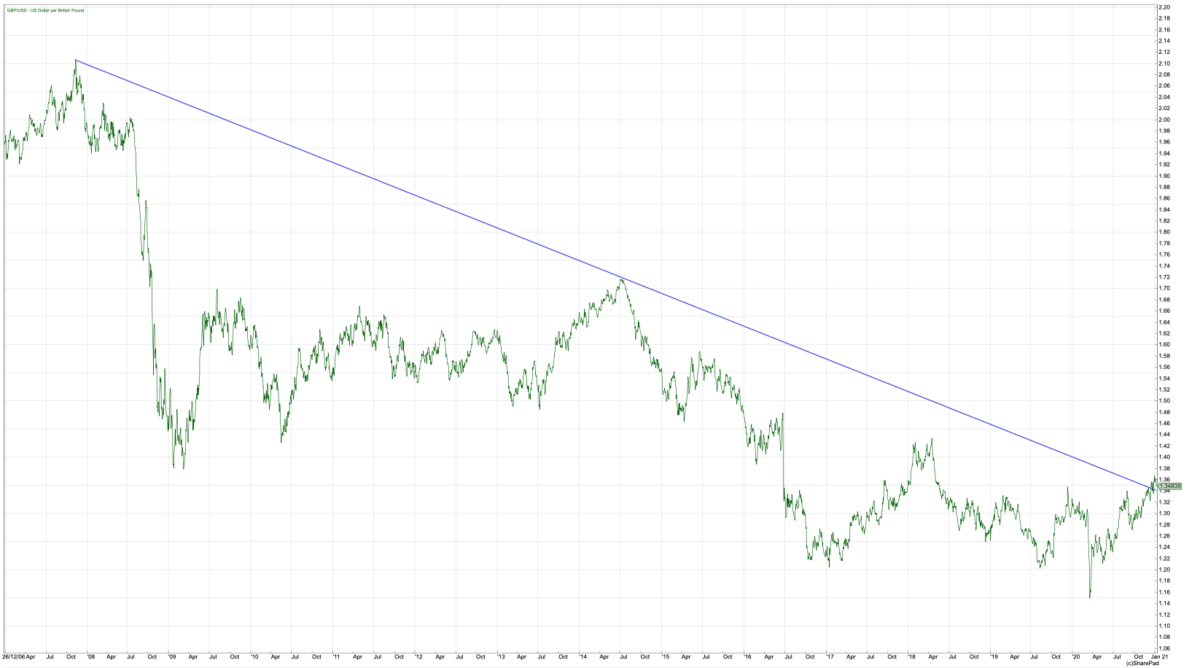What next for the pound?

The pound came into this year trading at its best levels against the US dollar since April 2018 – so just where are the opportunities in this market in the year ahead?
In the first spread betting column of 2021, you do not need me to remind you that it has been an unprecedented twelve months in financial markets thanks to the coronavirus – and we have entered the New Year with the pandemic far from vanquished. On top of this there has been Brexit of course – although this somewhat more local matter felt like it took something of a backseat during much of 2020. The pound came into this year trading at its best levels against the US dollar (GBP/USD) since April 2018 – so just where are the opportunities in this market in the year ahead?
Pound enjoys a bumper second half
I last wrote about the pound back in May and wondered back then whether it was the bargain market of 2020. In March, just as the coronavirus really started to spook global financial markets, the GBP/USD exchange rate had slipped down to 1.14 – the lowest levels seen since the mid-1980s. Investors deserted almost all risk assets – and the big winner in the eye of the storm was the US dollar, seen as the ultimate safe haven. In hindsight, March ended up being the shortest bear market in history for many financial assets and the pound was no exception. Since its March nadir, GBP/USD has rallied by around 20 percent and the US dollar index (the dollar against a basket of major currencies) has slid to its worst levels in more than two and a half years.
GBP/USD 2020 to present

Markets never expected “no-deal”
In the last months of 2020, traders’ focus did shift back to the Brexit discussions and, lo-and-behold, a last-minute deal was done between the EU and UK negotiators. I don’t think there was much doubt in the mind of markets that a “no-deal” exit would be avoided. It is something of a cliché to say “follow the money” at times like this, but the price action in the foreign exchange markets did suggest the pound was pricing in some sort of agreement as it continued to gain ground.
Another market cliché is “buy the rumour, sell the news” and following that positioning ahead of some sort of Brexit deal definitely worked from mid-September. It is a little trickier now but I think a longer-term view of GBP/USD could give us some clues as to an interesting trading approach – and opportunities in both directions in the months ahead.
Is GBP/USD at the start of a major trend reversal?
Taking a step back and looking at the bigger picture is always recommended, to try and filter out the day-to-day noise in any financial market.
GBP/USD – June 2005 to present

The fall in the value of the pound in the days following the EU Referendum in June 2016 is well-documented. I have highlighted it on the chart – but as can be seen, the GBP/USD rate had been having some tough times long before that surprise result. Back at the tail end of 2007 the pound in your pocket would buy more than two US dollars. The trend since those heady heights has been firmly down, culminating in that 1.14 low in March of last year.
But for the first time in thirteen years, the pound is making its first moves through that falling downtrend line. Before we get too excited and sell everything to open an enormous spread bet on the pound gaining further and re-testing the halcyon days of being worth twice as much as a US dollar, let’s just indulge in a pinch of realism.
I have been a technical analyst for more years than I care to remember. And the one abiding approach I use that works more often than not, is to trade with the trend. GBP/USD is breaking that down trendline – but we are just at the start of that break. There are such things as false breaks, so whilst it is definitely an interesting chart to kick the year off with, a bit of patience here would not go amiss. If the pound is really starting a major recovery, there will be plenty of time to jump on board.
A surprise US dollar recovery may be on the cards
At the end of 2020 it felt like all of the commentary surrounding the US dollar was very bearish, expecting further slides for the greenback. When sentiment is all pointing one way, the wise trader and investor should take a moment and consider whether this is at an extreme. It is at precisely these moments of extreme pessimism or optimism that the market will confound the experts and do the opposite.
US dollar index – March 2016 to present

This is a chart of the US dollar index mentioned earlier. This is also a tradeable market and it is the US dollar against a basket of other currencies. Since its March peak at 103, the index ended the year below 90, a fall of 12%.
This year sees a new president for the USA, and the expectation is that President Biden will be more generous when it comes to support for individuals and businesses. That sort of support normally comes at a price for a country’s currency and devalues it – which is good for the currencies of other countries. Sticking with that narrative, further weakness in the US dollar this year would push the pound higher and see even further gains for GBP/USD.
However, there is always the concept of this being “priced into” the US dollar. Financial markets do not wait around for an expected event to happen and then react. Markets are normally pretty effective at absorbing that information and re-pricing accordingly. That’s why I do wonder if the US dollar ends up staging a comeback in 2021. Add into this a simple technique of charting and technical analysis – important historical support. It can be seen on the chart above that in the first quarter of 2018, the US dollar index formed a major base in the 88/89 area. Support levels don’t form for magical reasons – they happen because there is a shift in market sentiment. The consensus is that at that level, the market represents value. Given at the time of writing the US dollar index is trading around 90, I think we need to be wary of another base building over the next few weeks and months, and the potential for a dollar rally which would put pressure on the pound.
Two trading ideas
I think there are both medium- and longer-term trades here for GBP/USD. The first is just following the trend that has been in place since March 2020.
GBP/USD – March 2020 to present

Although we could see a US dollar resurgence, these things usually take some time to evolve. This means that in the short-term GBP/USD could still squeeze higher from here, possibly above 1.4000 to retest the early 2018 highs. There is a clear trend in place with strong support from the mid November low at 1.3100. Buying a dip below 1.3500 would give a reasonably attractive risk versus reward if you expect, at the very least, another last gasp rally for the pound. If the pound moved higher and above the most recent high this year (1.3700 at the time of writing), I would be tempted to move the stop on a buy trade to break even.
GBPUSD – 2007 to present

This is the much longer-term trade out of the two and is based on the thirteen-year weakness for GBP/USD continuing. The assumption here would be the strength that has been seen over the past nine months or so is just a “bear market rally”. The pound is going to run out of steam and turn down once more. A longer-term resurgence for the US dollar would certainly help in this regard.
I do not think this is a ridiculous suggestion but the problem with this sort of trade is that you are going against the shorter-term momentum, so it can be a little painful in the early days of the trade. One approach could be to sell-short now, with a stop loss over that most recent high at 1.3700. If GBP/USD does break to new highs for the year, getting stopped out would signal that the trade was early but not necessarily wrong, and give the opportunity to possibly re-enter at a higher price.
Forecasting financial markets is hard enough at the best of times – and long-range forecasts are some of the most difficult – or perhaps futile is a better description! But I think that the year ahead holds some interesting prospects for the various foreign exchange markets, and our own currency definitely offers opportunities. For now, at least I would still be erring on the side of buying dips – but it does not do any harm to have a plan in place if that sentiment shifts as 2021 unfolds.
More of a case the dollar is doing badly , flattering the pound.
Why would anyone want the pound ?………oh thats it all those rich Hong Kong people…….fleeing for their freedom to Britain, complete with new British passports.
Upto 1.4 easy….. 1.5 USD max and then all the way back down again until the end of fiat. IMO.